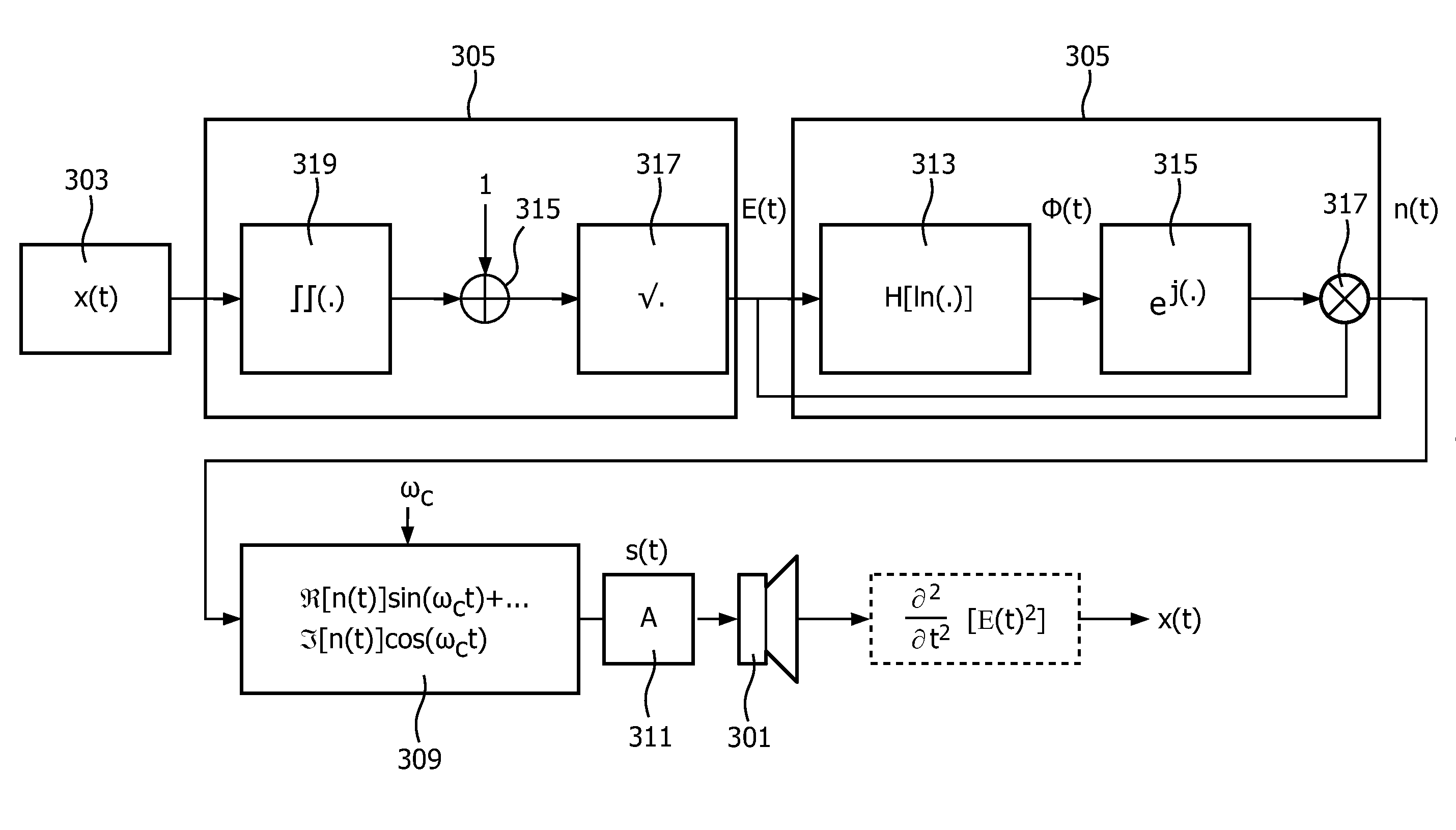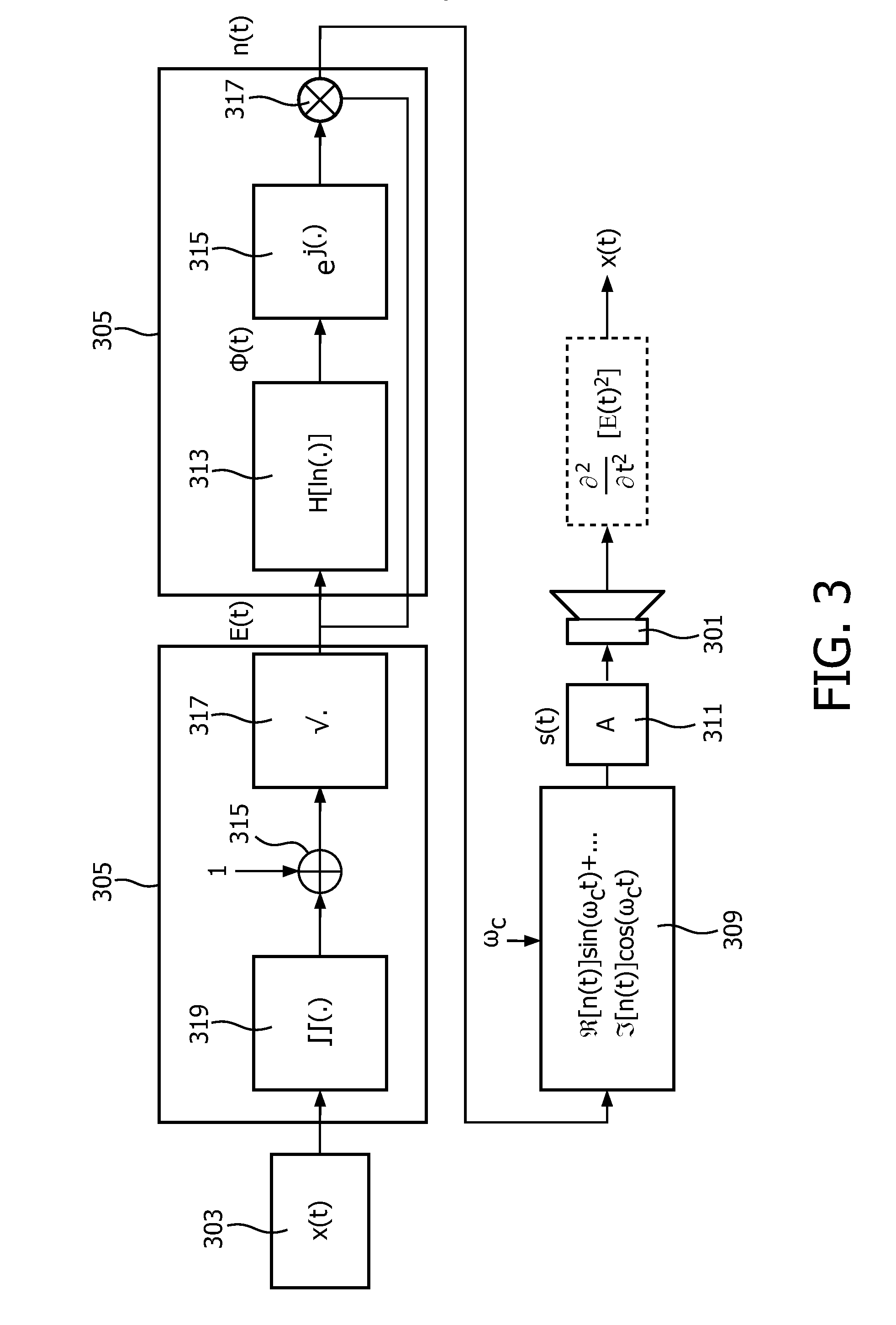Driving of parametric loudspeakers
a parametric loudspeaker and driving technology, applied in the direction of noise generation, magnetic restriction transducers, instruments, etc., can solve the problems of narrow and highly directional beams that are difficult to generate from traditional audio band loudspeakers, ultrasound becoming audible, narrow and highly directional beams, etc., to facilitate implementation and/or operation, improve the driving of parametric loudspeakers, and improve audio quality
- Summary
- Abstract
- Description
- Claims
- Application Information
AI Technical Summary
Benefits of technology
Problems solved by technology
Method used
Image
Examples
Embodiment Construction
[0069]The following description focuses on embodiments of the invention applicable to a parametric loudspeaker device using a Single SideBand (SSB) Amplitude Modulation (AM) of an ultrasonic carrier. However, it will be appreciated that the described principles and approaches are equally applicable to suppressed sideband AM modulation.
[0070]FIG. 3 illustrates an example of a parametric loudspeaker system in accordance with some embodiments. The system comprises an ultrasound transducer 301 which radiates a modulated ultrasound signal. The ultrasound signal is modulated by an audio signal such that the consequential in-air demodulation of the ultrasound signal results in reproduction of audio.
[0071]The parametric loudspeaker system comprises an input circuit 303 which receives the signal x(t) to be reproduced as sound from any suitable internal or external source. The in-air demodulation of an ultrasonic signal results in an audio signal which is a distortion of the envelope of the u...
PUM
 Login to View More
Login to View More Abstract
Description
Claims
Application Information
 Login to View More
Login to View More - R&D
- Intellectual Property
- Life Sciences
- Materials
- Tech Scout
- Unparalleled Data Quality
- Higher Quality Content
- 60% Fewer Hallucinations
Browse by: Latest US Patents, China's latest patents, Technical Efficacy Thesaurus, Application Domain, Technology Topic, Popular Technical Reports.
© 2025 PatSnap. All rights reserved.Legal|Privacy policy|Modern Slavery Act Transparency Statement|Sitemap|About US| Contact US: help@patsnap.com



